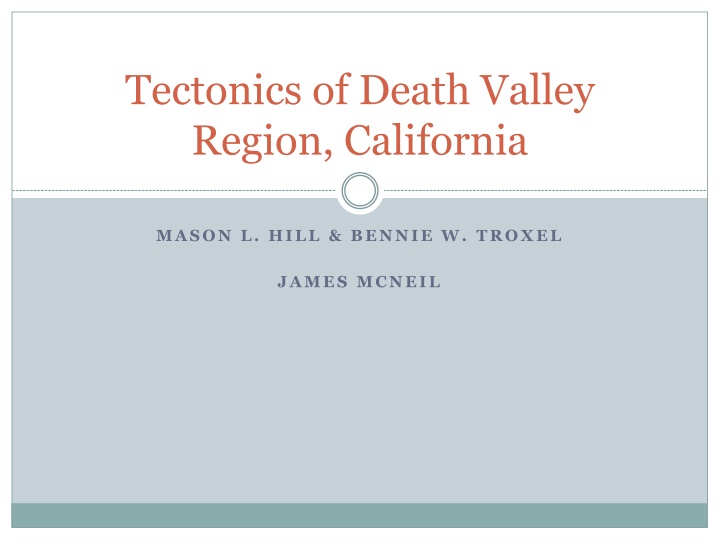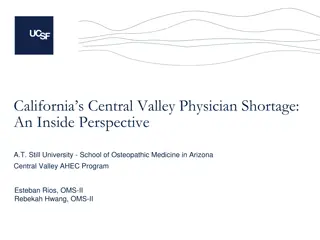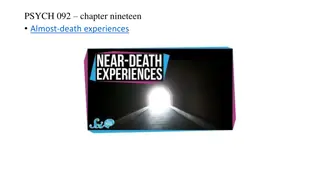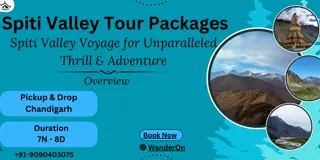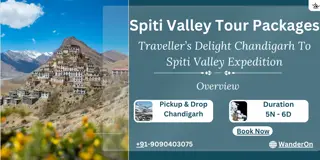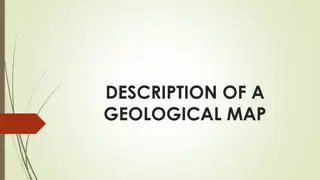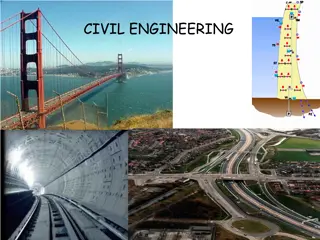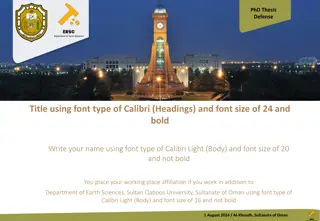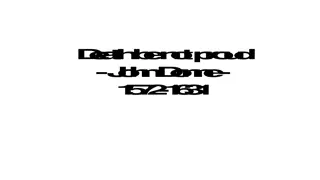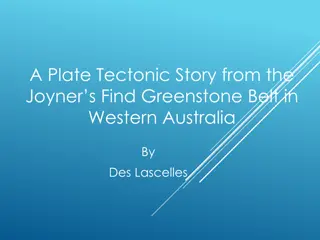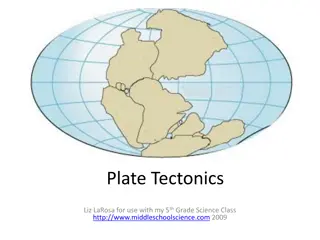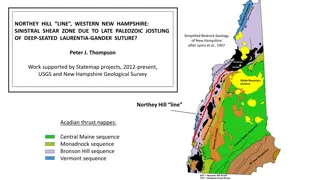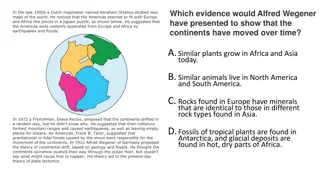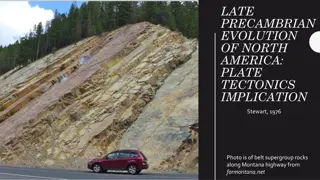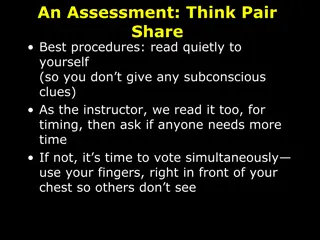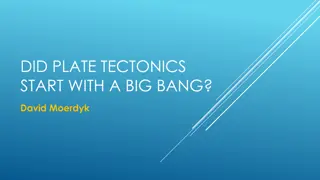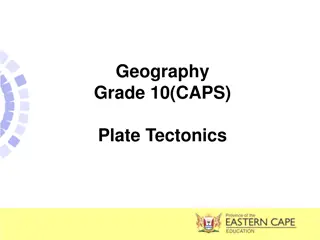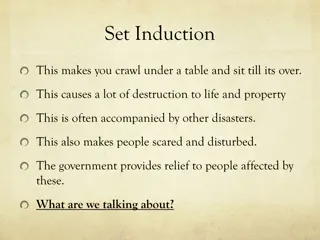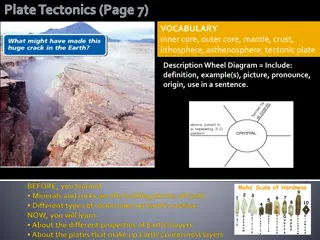Tectonics of Death Valley Region, California: A Geological Study
This study delves into the intricate tectonic processes of the Death Valley region in California, focusing on strike-slip and dip-slip fault systems, tensional and compressional stress, and the implications of NE-SW horizontal shortening and NW-SE relative extension. It explores the unique features such as turtlebacks, the Garlock Fault, and the Amargosa thrust, shedding light on the complex geologic history of the area.
Download Presentation

Please find below an Image/Link to download the presentation.
The content on the website is provided AS IS for your information and personal use only. It may not be sold, licensed, or shared on other websites without obtaining consent from the author.If you encounter any issues during the download, it is possible that the publisher has removed the file from their server.
You are allowed to download the files provided on this website for personal or commercial use, subject to the condition that they are used lawfully. All files are the property of their respective owners.
The content on the website is provided AS IS for your information and personal use only. It may not be sold, licensed, or shared on other websites without obtaining consent from the author.
E N D
Presentation Transcript
Tectonics of Death Valley Region, California MASON L. HILL & BENNIE W. TROXEL JAMES MCNEIL
Introduction Death Valley Turtlebacks Black Mountains Three groups Simple tensional stress Simple compressional stress Combined tensional and compressional stress Features characterized by strike-slip vs dip-slip This study Suggest single tectonic strain system NE-SW horizontal shortening NW-SE relative extension Could be related to larger SAF system
Tectonics Subparallel strike-slip fault systems Death Valley fault zone Furnace Creek fault zone Left-lateral Garlock Fault Turtlebacks (NW plunging) Badwater, Copper Canyon, Mormon Point Exhumed surfaces of an unconformity Precambrian crystalline rx. overlain by Tertiary seds Evidence of right-lateral slip Striations (plunging 30 northwest) Drag folds Right-lateral offset of a cinder cone Right lateral offsets of drainage line NE trending gash faults and dikes En echelon pattern of NW turtlebacks
Conclusions Shortening structures NE-SW shortening Amargosa thrust & turtlebacks Strike-slip system w/ strain axes approx. horizontal Anomalies occurring in confined zone between D.V. and F.C. strike-slip fault zones NE-SW shortening w/ folding, faulting, uplift, & erosion Turtlebacks Chaos Eroded and tectonically thinned to missing Paleozoic section Modifying B&R tectonics Previous model of pure dip-slip Using the D.V. strike-slip model for B&R systems Potential role of strike-slip faulting late Tertiary to recent throughout the region
Late Cenozoic history and styles of deformation along the southern Death Valley fault zone, California PAUL RAY BUTLER, BENNIE W. TROXEL, & KENNETH L. VEROSUB JAMES MCNEIL
Introduction Late Cenozoic deposits in southern Death Valley are offset ~35 km by right- lateral strike-slip faults beginning in the Miocene and before ~1 m.y. Butler et al., 1988
Background Controversy over the amount of strike-slip movement in the southern Death Valley region 8 km (Wright and Troxel, 1967) 80 km (Stewart, 1967) 35 km (this study) Eastern and western subzone Western subzone along flank of Owlshead Mountains Eastern subzone in southern Death Valley floor
Western Subzone Older than eastern subzone Evidence for ~35 km of right-lateral displacement along western subzone Correlating alluvial fan gravels with source area to the NW Uncertainty of the offset ( 5 km) Assumption that onset of volcanism is linked to fault movement Initiation of strike-slip movement coeval with onset of Miocene volcanism Little to no lateral displacement occurred in western subzone after ~1 m.y. (based on K-Ar dates from ash layers just below fan gravels)
Eastern Subzone Younger than western subzone Lateral and vertical components of movement Split cinder cone (0.69 Ma) shows offset for eastern subzone Confidence Hills Lacustrine sequence overlain by alluvial gravels Fan gravels uplifted up to 200 m above modern fan surface Seds are compressed and folded parallel to faults Uplifted Alluvial Fan Adjacent to Amargosa River Deformed by NW trending horsts and grabens (<5 m vertical displacements) and gentle folds Uplifts related to localized shortening perpendicular to faults in eastern subzone including Confidence Hills and southern Death Valley fault zone near Avawatz Mountains
Summary & Conclusions Region characterized by mid-Tertiary to Holocene extension ~35 km of right-lateral displacement along the southern Death Valley fault zone Western subzone is older with greater displacements Eastern subzone younger with more folding Possible explanation related to Garlock fault Intersection of southern D.V. fault and Garlock fault to south (~2 km) Garlock show left-lateral displacement but eastern termination is debated Eastward ramping since Miocene Garlock fault zone has been active during the same time period as D.V. fault zone East-directed thrusting of Avawatz Mountains Likely responsible for most recent activity along southern D.V. fault zone Avawatz Mountains thrust to east along branch of Garlock fault Explains difference in age and style of deformation for eastern and western subzones
